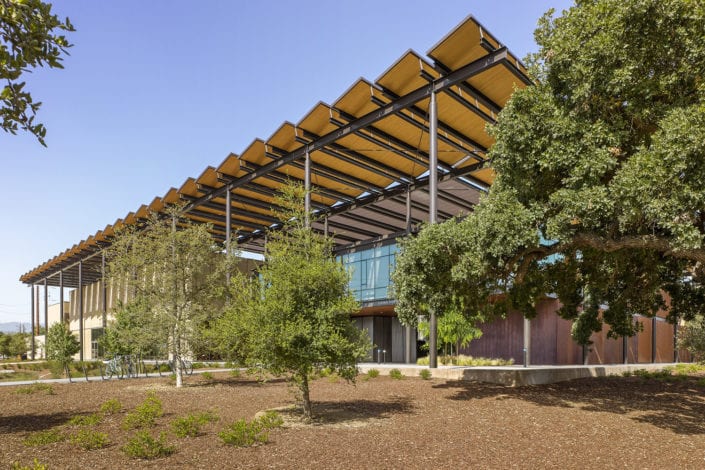After years of discussions, Stanford has withdrawn its application to build a massive expansion to its campus in an unincorporated part of Santa Clara County by Palo Alto, surprising some county elected officials who are facing blame from the university for the shift.
Stanford and county leaders for more than a year have been hotly discussing the details, particularly around affordable housing, of the university’s proposed expansion, which would include 2.275 million square feet of new academic space and thousands of new homes as part of its 2018 General Use Permit (GUP) application.
“We have taken this step with regret, but with a clear-eyed understanding of the challenges before us in achieving a successful long-term permit at this time,” said Stanford President Marc Tessier-Lavigne on Friday.
The heart of the disagreement centered around affordable and employee housing, with county leaders seeking 2,172 workforce housing units, which are typically more affordable than market-rate homes. That number was much more than the university had initially planned, though its proposal included thousands of beds for students.
However, this week Stanford budged on the housing issue and said it would build the homes county supervisors wanted — an apparent step forward in the negotiations.
But just as quickly, the university snapped back the offer because Stanford leaders say a majority of county elected officials wouldn’t approve a development agreement for the project. Development agreements are a commonly-used mechanism for large projects, and set out all of the terms of development, including community benefits. Stanford says it would provide some additional predictability for its 20-year multi-phase development in terms of what will be expected during the course of the project.
“While this was a difficult decision for the university, we learned this week that a majority of the (Santa Clara) Board of Supervisors was not willing to work constructively with us on a development agreement — even after our most recent offer to build or fund all the housing being sought by the county,” according to Stanford spokesperson Joel Berman.
But that news came as a surprise to at least two Santa Clara County supervisors, who said they spoke to university leaders earlier this week.
“I found the withdrawal surprising because I thought we were headed toward a win-win solution this coming Tuesday,” said Board President Joe Simitian, who represents District 5. “The (county) staff’s recommendation was to grant all 3.5 million square feet that Stanford had requested.”
The meeting this week was the first time Simitian or Supervisor Cindy Chavez, who represents District 2, had heard that Stanford would compromise on the workforce housing. From there, everything else seemed possible, Chavez said.
“The board, my colleagues, at no point did I hear any consternation about giving Stanford everything it wanted,” Chavez said of Stanford’s overall development proposal. “The mechanism isn’t the goal, the important part is getting the development done.”
Indeed, the Santa Clara Board of Supervisors was set to discuss the proposal and were expected to approve the project, with conditions around Stanford’s responsibility to mitigate the environmental impacts of the development, including traffic impacts. County officials had recommended denying Stanford’s application to use a development agreement, however.
Though Simitian said development agreements may be used for other projects around Silicon Valley, they are not typical for the county and have never been used in the past as Stanford has expanded its campus over the past five decades. He said signing such a contract would essentially yield land-use rights from the county to the university.
“I understand why the university thought that (a development agreement) was to their benefit, but it certainly wasn’t to the public’s benefit,” he said. “The university certainly can not be surprised that the county expects full mitigation of the project impacts; that is something that was on the table for the past three years.”
For now, Stanford officials say, the university will be focusing on community engagement. The school hasn’t provided a timeline for when or if it may submit a new project proposal.
“Through that (community engagement) process, we hope to gain deeper mutual understanding of the challenges facing our region, how Stanford can best enhance its contribution to addressing those challenges, and what the implications are for our longer-term campus development,” said Tessier-Lavigne
Meanwhile, Chavez said she isn’t sure about the next steps since Stanford has withdrawn its proposal, but said she’s open to working toward a solution.
“When you have people of good will, who have a vision for getting work done … there’s always a path forward,” she said. “I still think there’s a path forward.”
Contact Janice Bitters at [email protected] or follow @JaniceBitters on Twitter.



Leave a Reply
You must be logged in to post a comment.